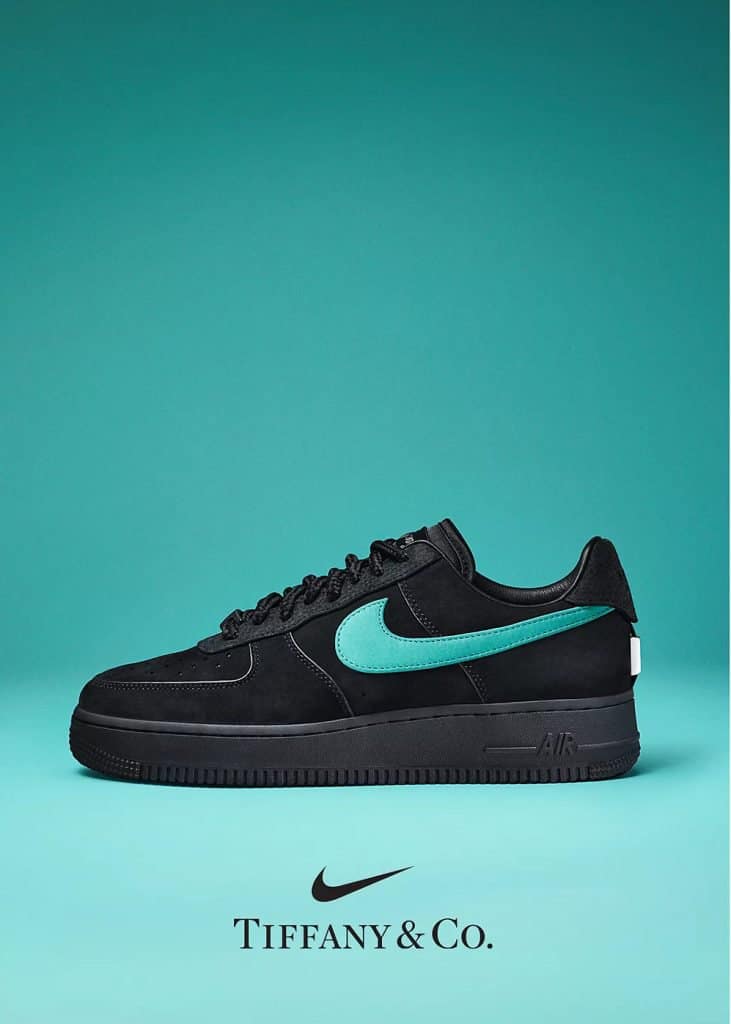
Entrepreneurs are betting on these 2024 marketing trends and strategies for 2024 — and I’m scratching my head.
Every morning I open up my news tab and scroll through the headlines and the trends. And the one thing that stood out to me is that every day the “What’s hot” and “What’s on trend” just seems to rotate and ultimately — to me it feels like there’s nothing new under the sun.
To me, it’s like sequel city over here. It literally feels like (other than AI) the trends that we were watching 20 years ago are still evolving and it honestly feels like — anything goes.
So, if everything goes, what should you, as an entrepreneur focus on? That’s what I said, so I asked 15 members of my community and here’s what they said.
Who said it’s not easy being green?
Now, I don’t think that I would call “green” a trend, I actually think that green and eco has absolutely gone mainstream.
What’s driving this trend?
Millennials and Gen Z customers grew up when the green and eco trend became a “thing” and now it’s mainstream. So if you or your business are even remotely eco focused – make this a part of your marketing.

I think that the world of entrepreneurship is constantly evolving, and what’s considered “hot” can change rapidly. However, what I have seen recently is that sustainable and eco-friendly startups have become something of a lot of interest. Sustainability is a growing concern, and many entrepreneurs are focusing on businesses that prioritize eco-friendliness and sustainability. This includes companies involved in renewable energy, upcycling, zero-waste products, and ethical fashion. These startups are not only making a positive impact but also proving to be economically viable in a world increasingly conscious of sustainability and eco-responsibility.
But there’s another subtle influence that’s turning up the volume here — research shows that consumers want companies, corporations, brands, and even small businesses to take a stand around just about any issue. So if eco is your thing – sing it from the rooftops.
Unexpected Collabs Are Everything! But Watch Out For The Risk
Todays consumers (yes, even the B2B ones) have this “been there, done that, bought all the t-shirts) attitude about everything. In other words, you can’t surprise anyone. But when you do — it’s amazing.

Brand collaborations are a big deal right now, and it’s a great opportunity for entrepreneurs to put their business in front of new eyeballs. By collaborating with other companies and influencers, you leverage their existing customer and follower-base, which is far more effective than other forms of digital marketing. Whatever your entrepreneurial idea is, look for ways to partner up with other, bigger-name brands.
Jason Vaught, Director of Content, SmashBrand
Partnering has always been a thing. But since we all have the attention span of a flea that can’t be shocked by anything, you’ve got to level your collaboration game up!
How?
Do the unexpected — Here’s what you need in place to have a successful collaboration. This list comes from EQL, an agency specializing in collaborations:
Surprise factor: Combine elements of two exciting brands in a new and unique way, creating something enticing and unexpected.
Innovation: Tear down industry boundaries and blur lines across communities and fandoms.
Storytelling: The very best launches have a story that extends well beyond the product and represents a community, cause, or moment in time.
Heat: No collab can be successful without generating excitement about their launch. We think the brands on this list did it best in 2023.
I can’t end this without mentioning that creating surprising collaborations is not without it’s risks — Dylan Mulvaney and Bud Light anyone? For all intents and purposes, this should have worked, it fit all the elements of the above. Except that it didn’t.
Here are some that did:
Tiffany & Nike

The idea here was to do a mashup of Nike’s “Just Do It” energy with Tiffany’s timeless beauty and elegance. You get the meta message there, right. It worked.
Here’s another one I loved.
Mattel’s Hot Wheels and Ford Bronko

This is such an intuitive and yet surprising collaboration. It has all the feels.
Whodda thunk it? Being profitable and doing the right thing are NOT mutually exclusive!
Back in graduate school we did a project that compared companies who “did the right thing” (I’ll let you define that for yourself) vs companies who were completely profit driven and guess which one was more profitable over time?
The do-gooder. No lie.
So let’s take this to it’s logical conclusion. If today’s consumers want companies to take a stand on social issues, and doing the right thing is actually profitable. then if you’re passionate about something, you can certainly turn it into a thriving business.
Some call this group the “Passion to Profit” crowd, other call the heart centered. But whatever you call them, know that it’s a thing.

Social entrepreneurship refers to the use of entrepreneurial principles and techniques to create and implement innovative solutions to social, cultural, or environmental issues. It combines business strategies with a desire for positive change, making it an attractive career path for many individuals who want to make a difference in the world while also running a successful business.
Zach Shelley, Founder and CEO, A-List Properties
If content gets any shorter, it’s going to be literally streamed into your brain.
No one reads anymore and most people would rather spend 90 minutes scrolling through their TikTok than watch a movie. Content is getting shorter and shorter (unlike this article) 😛

Short-form content is preferred over long-form content. People dislike reading bulky introductions. They’re impatient, and their attention span has decreased significantly. This has heavily impacted people’s content consumption patterns. The result is a rising demand for short-form videos, carousels, short posts, etc. For entrepreneurs, this means creating snappy content pieces that attract attention. Modern entrepreneurs can leverage platforms like TikTok, YouTube Shorts, and LinkedIn to establish thought leadership by capturing users’ attention in this fast-paced digital age.
Shivbhadrasinh Gohil, CMO and Co-Founder, Meetanshi
This worries me. It’s like we’re trading healthy habits for convenience and hey, I like pizza as much as the other person, but eventually, you have GOT to eat some vegetables.
In other words, we’re on this continuous trend toward shorter and shorter content, but we’re sacrificing nuance, understanding, and I’m sorry to say this — a level of intelligence that comes from deep reading and understanding.
When I think about consuming content, I think about content as knowledge and energy. Sure, you can drink your protein, but a steak is so much more rewarding.
More than 20 years in and we’re still trying to figure out social. But you know who’s figured it out — retailers!

From marketing and engaging customers to generating leads and closing sales, it all happens on social media. These platforms are designed to eliminate any bottlenecks between sellers and buyers. However, sellers must participate meaningfully on these platforms to grow their following. Luckily, it’s a worthy investment. Social media is expected to grow into a half-a-trillion-dollar industry by 2025.
Young Pham, Founder and Project Manager, Biz Report
From the TikTok Shop to Facebook and even Facebook Marketplace social has truly become a public square.
Now there are folks out on social bragging about their millions, but if you’re like most of us – you don’t believe them, and you shouldn’t.
People are tired, cynical, untrusting and broke. This is going to make them much savvier consumers in every way. So if you’re retailing on social, make building trusting relationships a priority.
There’s riches in niches — if you know how to be a part of the tribe

Among entrepreneurs, we’re seeing the rise of those catering to increasingly niche markets. For instance, the thriving trend of “micro-niche” businesses within the podcast industry involves brands that opt for highly specialized show topics, like in-depth discussions about the history of tea ceremonies in Japan, or the life stories of well-known artists. This underscores the shift towards hyper-personalization in audio content specifically. In a world where consumers crave products and services tailored to their exact desires, entrepreneurs who can identify and tap into these niche markets are not only meeting demand but also fostering a loyal and enthusiastic customer base, leading to remarkable business growth and profitability. If you’re considering a new venture, it’s time to think small to win big!
Harry Morton, Founder, Lower Street
I always like to say that “You can’t sell anything to everybody”. It’s counter-intuitive but it’s so true. Your brain is telling you that if you focus you’re missing out on customers, but just the opposite is true. When you select a hyper-targeted, hyper engaged audience, they’re going to come out of the woodwork – like flies to honey. (ok, kinda gross but you get it)
Years ago Facebook used this idea to promote their new “Facebook Groups” to show people that no matter what you’re into – there’s a community that shares that interest.
Entrepreneurs are building empires from home in fuzzy slippers and I’m so here for it
This whole remote working “trend” has been happening for about 25 years. Heck, I started working from home in 1999 and went fully into the cloud in the early 2000s. So, I’m not sure that remote work is a trend, as much as building empires from home.

Work-from-home entrepreneurship is absolutely trending these days, and it will only continue to expand and grow in the coming years. There are so many new, successful entrepreneurs today who work exclusively from home and who rarely get to meet any of their employees, and yet, they are some of the most successful people on the web today. It’s exciting to watch and see where this trend goes.
Max Wesman, Chief Operating Officer, GoodHire
This trend is all about SCALING and growing a business virtually.
It took us two decades to realize that we’re all more productive from home. It took us 2 years of pandemic to push the reluctant corporations into hybrid work (despite that data that shows that people love working from home and they’re more productive working from home).
But the next two decades are going to be dedicated to cracking the code on remote scaling – building empires from home.
Glowing up the gig economy – it’s here to stay, but are freelancers benefiting as much as corporations?
Mobile apps and devices have opened up the world of multiple income streams, side hustles, and gig entrepreneurship.

At TechNews, we’ve seen how businesses are embracing this trend. Entrepreneurs are setting up gig schemes where professionals, like freelancers, are brought in on a project basis. It’s quite a shift from the traditional employment model. No hefty benefits to cover. No long-term labor commitments. And often, these gig workers come with their own gear, cutting down on overhead. They bring their own software and skills, do the job, and both sides can part ways with no strings attached. This flexibility is key in professional services. It saves costs and adapts to workflow needs. For entrepreneurs ready to pivot and scale, the gig economy is a hotbed of potential.
Neil Hodgson-Coyle, COO, TechNews180
I’m not sure where I stand with this. My question is always who benefits. If you’ve designed a successful gig business model that gives you everything you need and want in a career — more power to you.
As for me, I’m not sure this is serving or contributing to #EntrepreneurLife — especially if your idea of entrepreneurship is having time and money for fun.
Did someone start a marketing campaign out there called “Hustles are HOT”? I don’t know, but if you have to work 12 hours a day for gigs that have to cover taxes, healthcare, your equipment, etc. then you need to take a step back.
All that said – if you’re a knowledge worker, subject matter expert, and already have investments in tools, equipment, etc. and you already have healthcare — this is a boon to your business.
It’s worked for me — but it may not work for everyone — do the math.
It’s a tech free-for-all, and I’m all for it
The internet obliterated the old top-down communication model, and given everyone a platform. This can be a good thing or a bad thing.

A compelling trend in entrepreneurship that’s hard to ignore is the democratization of technology. I’m excited about how, with the accessibility of tools, platforms, and information, entrepreneurs no longer need extensive technical backgrounds to innovate. Low-code and no-code development platforms, open-source resources, and online courses make it easier than ever to turn creative ideas into tech-driven startups. This democratization is fostering innovation and diversity in the entrepreneurial landscape.
Phil Strazzulla, Founder, SelectSoftware Reviews
Your customers are more cynical than ever, and that means that companies that invest in the “Trust” factor and sustain it will come out on top.
This is where small business really has a leg up because of two very important factors:
Consumers have had it with “the man” — the giant corporate man, that is. Supporting small business and entrepreneurs is more popular than ever.
Small businesses are relatable. they are the people in our neighborhood, they are dealing with the same stuff as the rest of us, and we want to support them
AI, AI everywhere and not a human to think
Nah, don’t you worry. AI isn’t taking your job any time soon. In fact AI needs human creativity in order to do a good job.
Your goal as an entrepreneur is to leverage AI’s strengths of speed, processing and analysis to make those tedious jobs go faster and easier.

Artificial Intelligence is hot right now for many reasons, but one trend that’s caught our attention is the power of AI translation tools. We tested translating some English content to Mandarin since my partner is a native Mandarin speaker, and the results were eye-opening. The translations didn’t need human editing and read clearly, although we still recommend that a native speaker review the work for those edge cases. Still, this advancement in AI can save companies tons of resources when they want to put out content in multiple languages.
Scott Sidders, Co-Founder, Scott & Yanling Media Inc.
Code? You don’t need to stinkin’ code to build your empire
This trend is a subtle nod to the AI boom that hit in 2023 and that’s going to keep on giving. These large language models are democratizing applications, repetitive tasks to the point where a toddler can create an app to sell or run their business.
Again, developers aren’t going anywhere. Why? because despite what they tell you about AI robots and AI being able to complete tasks, this all takes programming knowhow.

One trend that’s really heating up is the rise of no-code platforms. These platforms are democratizing the ability to create and innovate. Just the other day, I was chatting with a fellow entrepreneur who was raving about no-code tools and how they were able to launch an online marketplace without writing a single line of code.
This trend is a game-changer, especially for small businesses like mine. It allows us to compete with the big players by rapidly testing ideas and rolling out new services. For instance, I could use a platform like Bubble to add a booking system to my cleaning business website, making it super easy for my clients to schedule appointments. And the best part? I can do this without the hefty cost of hiring a developer.
It’s not just about cutting costs, though. No-code platforms are empowering. They give us, the non-technical entrepreneurs, the keys to the digital kingdom. We can now take our visions and turn them into reality, all on our own.
John White, MBA – Owner, White Fox Cleaning Services
Authenticity is the new unicorn; rare, magical, and in high demand
The Edelman Trust Barometer shows yet another year of declining trust. Consumers are tired of being lied to and they don’t know who to trust.
If all you do is have the right people to do the right things right, you’re going to see results.

Authenticity is hot now, as people crave real connections and transparency from brands. Consumers want behind-the-scenes stories revealing motivations and values versus slick marketing. They expect stances on social causes, not neutrality. Startup founders are sharing imperfect journeys, not curating polished lies.
This thirst for authenticity has enabled new voices to thrive. Substack newsletters with distinct perspectives meet needs for honesty. Influencers candidly sharing mental health struggles build deep loyalty. Sustainability-focused brands attract Gen Z over profit-touting competitors.
The paradigm has shifted—perfection is out. Hard truths are in. There is power in having the courage to let your flaws show through your business. The hot trend is simple: be who you truly are. Authenticity above all else connects enterprises with the audiences they need most right now.
Mona Kirstein, Ph.D., Digital Strategist, Holistic Coach and Consultant, The Wholehearted Path
Put me in coach! In-house innovators are have got it going on
3M made intrapreneurship popular in the the 1960’s, then it resurfaced in the mid 80’s and then sort of took a back seat to cutting costs, buying back stock, and increasing profits.
Will 2024 see a resurgence of intrapreneurship? Our community thinks so.

Entrepreneurship has been rapidly increasing as more people look to become their own boss and take control of their career. One current trend that’s becoming increasingly popular is “intrapreneurship”. This type of entrepreneurship focuses on creating an innovative product or service directly within a company, instead of starting up their own business. An example could be utilizing pet projects, which involves employees who have autonomy over a certain project from the start phase right up to the launch phase. This allows intrapreneurs to utilize resources from within their company, such as insight from colleagues at different levels and access to existing networks. Through this approach, creativity can be truly unleashed, and new ideas tested without disrupting everyday operations in organizations. This is also a great way for professionals to “trial run” entrepreneurship, instead of making the leap, leaving full-time jobs, and going all-in on a startup idea.
Tasia Duske, CEO, Museum Hack
But what if you’re a solopreneur? How do you make intrapreneurship work? I’d say you can leverage the power of your outsourced team, you can team up with partners or other non-competing business owners and create a sort of working advisory board.
The death of Zoom (I wish)
After three years of pandemic isolation and incessant Zoom meetings, people are ready to go love and in person.
Live events are back (with a hybrid option) and people are all for it.
But another trend right now is having our favorite online stores IRL.

Physical locations are very “in” right now. Netflix is planning to open storefronts in the next two years. Apple is relying on in-store demos to showcase its new Apple Vision Pro. The largest companies in the world want to be hands-on—so do entrepreneurs.
There’s so much noise in the digital space right now that being present physically is becoming much more important. Consider this alongside our recent shift to digital-first remote environments, and you’ll see the full picture. Customers want to know you for themselves—having a physical presence, even if it’s not retail-oriented, is more important than ever.
Mark Varnas, Principal SQL Server DBA and Consultant, Red9
Consumers want a seamless experience from online to offline. Whether your’e a retail location, restaurant, lawyer, or consultant, take some time to think about creating real customer experiences.
A local retailer complained that people come to their store, try their stuff and buy it cheaper online. As a small business, you’re going to have to embrace this new behavior and take a fresh look at how you’re going to use your physical space to create the best customer experience while making it easy for customers to find and buy your product online.
Good riddance to gurus — you better have real deal wisdom in your back pocket
Within a week of ChatGPT launching, there were people on TIkTok, LinkedIn, Facebook and who knows where else claiming that they were an expert, guru, thought leader, etc. They were already selling courses, prompts, and claiming to make you a millionaire — within days of launching.
This was so pervasive that my social media streams were filled with people joking about how long before we saw someone claiming to be a guru on the topic.

Thought leadership is very in right now. Generative AI has really obliterated the market for your run-of-the-mill educational content that ChatGPT does a better job of generating. To truly create something the AI doesn’t know, you have to rely on your internal subject-matter experts. This kind of content makes for great blog posts and can be repurposed on LinkedIn for additional reach. No matter the role or job title, leveraging the expertise of the people you have on staff works best for increasing your entrepreneurial success.
Michael Power, CMO, DTF Transfers
Thought leadership no longer means knowing a lot about something, we can look things up, hell, we can ask Alexa or ChatGPT.
If you want to be thought leader, you have to do more than look good on social, you have to be more than an author. You’re going to need to be nimble, flexible, and have had the experience of swimming with the sharks and living to tell about it.
What does that mean?
It means that experience matters. And by that I mean having access to experts at all age and experience levels. It means being able to harness the knowledge and wisdom across borders and simply make it make sense.







